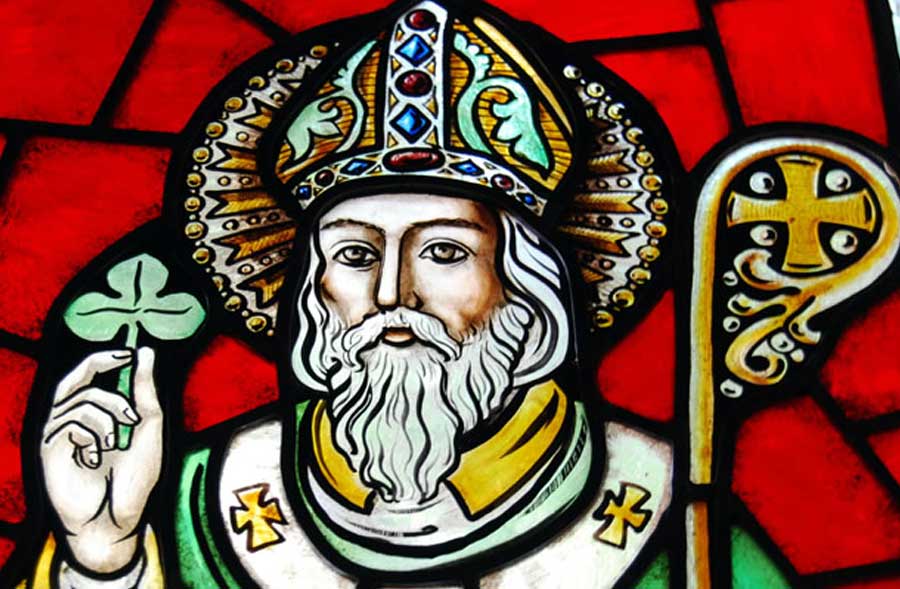
On Martin Luther King Jr. Day we celebrate the birth of Martin Luther King. On President’s Day we celebrate the birth of two presidents: George Washington and Abraham Lincoln. On Christmas we celebrate the birth of Jesus Christ. On St. Patrick’s Day we celebrate the birth of St. Patrick. Actually, no.
The March 17 festivity is really a commemoration of his death. This may seem unusual, but many feast days associated with Catholic saints mark the dates of the person’s death because it is also seen as their birth date into heaven. If a saint’s date of death is not known another date is assigned, such as the date of canonization. In the case of Patrick, a specific date has been handed down through history and has grown in importance over time.
While considered the patron saint of Ireland, Patrick wasn’t Irish. He was thought to have been born in Scotland around 387 to a well-to-do family of Roman descent. When he was in his mid-to-late teens he was kidnapped by Irish pirates who sold him as a slave. He spent six years tending livestock in the wilds of Ireland, during which time he prayed frequently and intensely. Eventually, he escaped by boat and was reunited with his family. His time in the wilds of Ireland had shaped his future, though. He heard the call of God on his life and answered it by becoming a priest and a missionary to the same country where he had once been a captive. He returned to Ireland and spent the rest of his life traveling and preaching, converting, and baptizing the Irish.

St. Patrick’s Gravesite in Downpatrick, Co. Down, Northern Ireland (Photo: Creative Commons, by Brian O’Neill)
While a date for his death has been set with some certainty, the year of his death is debated. Some say he died in 461, while other places record it as 493. Legend says he was 120 years old when he died. After receiving last rites, he was buried in a shroud woven by St. Brigid. As with many saints of old, stories surrounded his death, including that his body was placed in a cart pulled by two untamed oxen and where they stopped was the place he was buried and a church erected in his honor. The church became Down Cathedral, where Patrick’s grave is said to be. However, “The Annals of the Four Masters” (an Irish history compiled between 1632-1636) record that a dispute arose over which clan would claim his body, but that God himself settled the matter when they met at a river:
“and the river swelled against them so that they were not able to cross it in consequence of the greatness of the flood. When the flood had subsided these hosts united on terms of peace, i.e. the Ui Neill and the Ulaid, to bring the body of Patrick with them. It appeared to each of them that each had the body conveying it to their respective territories, so that God separated them in this manner, without a fight or battle”. (<https://en.wikipedia.org/wiki/Battle_for_the_Body_of_St._Patrick>).
Patrick’s resting place is considered to be Down Cathedral in Downpatrick in County Down in Northern Ireland. His grave is marked by a large granite stone from the Mourne Mountains that was placed there in 1900. Tradition says that saints Brigid and Comulcille are buried with him: “In Down, three Saints on grave do fill, Patrick, Brigid, and Columcille.” Irish warriors of old were buried standing upright, but Patrick is most likely buried lying down with his head facing east toward Jerusalem.
Today the patron saint of Ireland is famous beyond his beloved green shores. As the Irish people emigrated, so did their observances, and St. Patrick’s Day has become a popular celebration in many parts of the world. In Ireland, the day is considered a solemnity on the church calendar, referring to its status as a religious day of highest importance. In other parts of the world it is simply considered a feast day. Many non-religious people observe the day as a cultural celebration, too, although most of the customs associated with the day would have been foreign to Patrick. The wearing o’ the green, enjoying a pint, eating corned beef, and marching in parades are all later forms of celebration. But really a celebration not only of his birth but his death and rebirth, making St. Patrick’s Day a wake of immense proportion.
St. Patrick Resources
- A link to the St. Patrick Centre in Downpatrick
- History Channel: St. Patrick Dies
- The True History Behind St. Patrick’s Day









